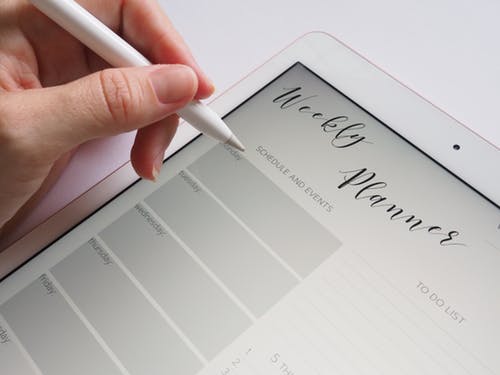
Years ago I was having dinner with my parents. The phone rang. It was a friend in a panic. She was driving home and her car died. We later found out that her car had an oil leak. And, because she hadn’t put oil in it, the car obviously overheated and shut down. But how do you prioritize yourself?
Do you make sure that your vehicle is well maintained? Are you prioritizing yourself? You will want to prioritize all the things in your life that you can so that your life will run smoothly. When you prioritize yourself — all parts of life run better. You’re not going to break down because you’re physically and mentally burned out.
As Lisa Firestone Ph.D. notes in Psychology Today, everyone should take care of themselves because:
- When we’re drained, we don’t have anything else to give to others.
- Doing what we love recharges us.
- We lose aspects of ourselves when only focused on others.
- Setting aside our own needs can exhaust those around us.
- We lose ourselves in our own critical inner voice.
- We fail to practice self-compassion.
- It causes stress for us and our family, friends, and co-workers.
- It impairs our performance at work.
Additionally, when you put yourself at the bottom of your to-do-list, you’re more stressed and less energetic and creative. Your sleep is impaired and you may turn to other vices. Self-care is one of the secrets to physical and mental health.
Despite this fact, many of us fail to put ourselves first. While this varies from person to person, it’s usually because we believe that it’s selfish — which it’s not. We also have a tendency to overcommit, get distracted by unhealthy activities like watching TV or simply don’t feel worthy of the best things — and you are.
Thankfully, there are simple ways for you to finally prioritize yourself. And, here’s where you can start.
Take a “me” moment.
Like my sister and her car, why wait until there’s a problem? Instead, make prioritizing a part of your routine. “Self-care is simply every day, healthy rituals that keep your body and mind energized,” Alexia Brue, co-founder, and CEO of Well+Good, told Forbes.
“It could be as simple as going to bed every night at the same time, scheduling a regular massage or lighting candles and taking a pause,” adds Brue. “It’s finding whatever recharges you, and then incorporating it as a ritual into your life.”
Do you feel so crunched for time that this isn’t feasible? Well, in a previous Calendar article, Choncé Maddox gave the following suggestions on how to add a self-care routine to your calendar:
- Book self-care appointments first thing in the morning before you get sidetracked. It will also make you feel energized and boost your productivity for the day.
- Time block your schedule. “Choose a time of day to block out just for self-care,” recommends Choncé. “This can be 30 minutes, one hour, or several hours if you’ve already finished up with work and other responsibilities for the day.”
- “When it comes to making room for self-care, you can turn your self-care routine into a system that you can easily schedule in when necessary,” adds Choncé. For example, when you take breaks into work-related tasks, you could go for a walk, meditate, or journal.
- Start small, such as claiming 5 to 10 minutes per day for yourself.
Increase your emotional intelligence.
“Emotional intelligence is the ability to recognize our feelings, emotions, and moods to better identify what we are feeling and why,” says Jen Shirkani, keynote speaker and author of “Ego vs. EQ” and “Choose Resilience.”
“By [doing that], we can channel our emotions to respond in healthy, intelligent ways rather than allowing our emotions to take over and undermine us,” adds Shirkani.
Schedule times throughout the day to check-in on your feelings. If you feel stressed or anxious, then you may want to take a step back to acknowledge and address these feelings. It could be something as simple as going for a walk or talking to a friend. That may mean rescheduling a conference call or task. But, it’s better than letting these feelings bottle up and explode.
Watch your language.
“Language can have a profound effect on your thoughts, moods, and perspective,” notes the team at Jody Michael Associates. “It’s not just what comes out of your mouth in conversations with others; the messages you tell yourself play an essential role in how you feel.”
In all fairness, it’s easy to fall into the trap of beating yourself up when you fail. Instead of labeling yourself as a “failure” or “incompetent,” treat yourself with compassion. You can do this by encouraging “yourself in the same way that you would a child or a good friend. If you tell yourself ‘You’ve got this!’ often enough, you will get it!”
Take a break from social media.
Yeah. It’s easy to take shots at social media these days. But, even if you don’t permanently quit, it’s easy to understand why people are reducing the time spent on these platforms.
On top of privacy concerns, damaging your reputation, and being distracting, social media can increase anxiety and depression. It can also reduce the amount of sleep that you get. And, it’s a poor use of downtime. As opposed to spending over an hour a day on social media, you could spend that time taking care of your well-being.
If you can’t delete your accounts, you can at least limit your exposure by uninstalling the apps on your phone. If that’s not an option, then banish them from your home screen. You could use apps like Freedom, SelfControl, or Offtime that block these channels when you don’t want to be distracted. And, you could also delegate or automate your social media responsibilities.
Recite empowering mantras.
Are you not prioritizing yourself because of guilt? If so, recite empowering mantras. These have the ability to boost your self-worth and motivate you to attend to your own needs.
Here are a six mantras, courtesy of Shine, that you can try out today:
- “I deserve joy.”
- “I am important.”
- “When I pour into myself, I can shine my light onto others.”
- “I am worthy of all the things that bring me happiness.”
- “I can make time to nourish my mind, body, and spirit.”
Phase-out the negative and stress in your life.
Carve out a piece time, preferably when you’re not focused on something important, to evaluate the things in life that are causing you stress. Are they truly important to you? If not, you may want to start cutting them out of your life. For example, if there is a friend who consumes too much of your time and energy, you may want to distance yourself from their negativity.
If you’re not satisfied with your career, you may want to search for a new job. Or, you may even want to take the limb and start your own business. It may be nerve-racking. But, you don’t necessarily have to quit your job today. You could browse openings or have a side hustle until it takes off.
Learn how to say “no.”
Putting your foot down and standing your ground is probably the most effective way to prioritize yourself. If you don’t say “no,” then you’ll always put other’s wants and needs ahead of your own. Not only is this time-consuming, but you’ll also always be behind on your work. And, it prevents you from doing the things that you actually want to do.
The good thing is that you can say “no” to others without offending them. You can achieve this by being honest and straightforward with them. They may be disappointed. But, they should understand and respect your decision.
You could also have a policy. For example, Friday nights are reserved for your family. No exceptions. So, if a friend from college wanted to get together, you would have to offer an alternative like Saturday night.
Remember your why.
In the hustle and bustle of daily life, it’s easy to lose track of your why. But, slow down and think about why you get out of bed every morning. Why do you go to work, hit the gym, or strive for learning opportunities?
Reconnecting with your why puts things in perspective. It can reignite your passion. It motivates you to achieve your goals. And, it will encourage you to put yourself first.
Reflect and accept who you are.
I’m not gonna lie. It’s never easy to admit your faults. But, when you’re transparent with yourself, you can look for ways to grow. At the same time, you don’t have to just focus on your shortcomings. Every day discover something new that you like about yourself. Besides giving you a self-esteem boost, you can also look for opportunities to put your strengths to good use.
Accepting who are means acknowledging your strengths and weaknesses. From there, you can spend your time devoted to what you can and can not change.
Schedule downtime.
Finally, make it a point to schedule downtime. Start by taking 15-minute breaks between tasks at work. When you’re done for the day, leave work where it belongs — the office. Instead, spend your evenings with your family or just relaxing. And, during the weekends, do things that you genuinely enjoy.








